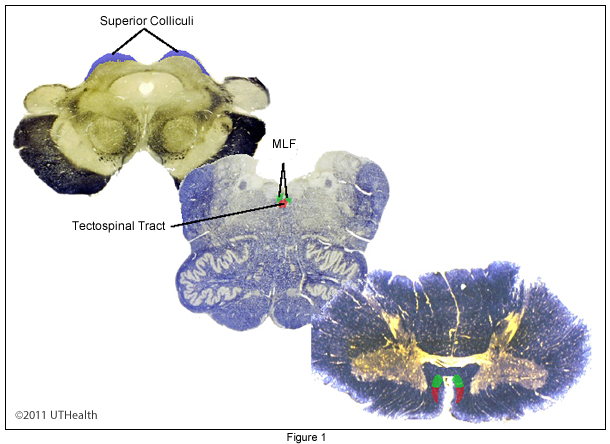Lab 6 (ƒ9) Descending Pathways to the Spinal Cord
The Tectospinal Pathway
 The fibers of the tectospinal tract arise from the deep layers of the superior colliculus, sweep anteromedially around the periaqueductal gray and oculomotor nuclei, decussate and descend as the tectospinal tract. The superior colliculus receives input from the retina (optic tract), diffuse areas of the cerebral cortex, basal ganglia, inferior colliculus, spinal cord and reticular formation. A major component of the tectospinal tract is involved in postural reflexes to visual and acoustic stimuli. The direct tectospinal tract is relatively small in humans.
The fibers of the tectospinal tract arise from the deep layers of the superior colliculus, sweep anteromedially around the periaqueductal gray and oculomotor nuclei, decussate and descend as the tectospinal tract. The superior colliculus receives input from the retina (optic tract), diffuse areas of the cerebral cortex, basal ganglia, inferior colliculus, spinal cord and reticular formation. A major component of the tectospinal tract is involved in postural reflexes to visual and acoustic stimuli. The direct tectospinal tract is relatively small in humans.
The fibers (crossed) of the tectospinal tract are located along the midline, just anterior to the medial longitudinal fasciculus. They remain in close association with the medial longitudinal fasciculus through the brainstem.
The majority of the tectospinal tract fibers terminate in the upper cervical segments. These fibers are believed to play a role in the execution of certain spinal reflexes (e.g., head turning) to visual and auditory stimuli.
